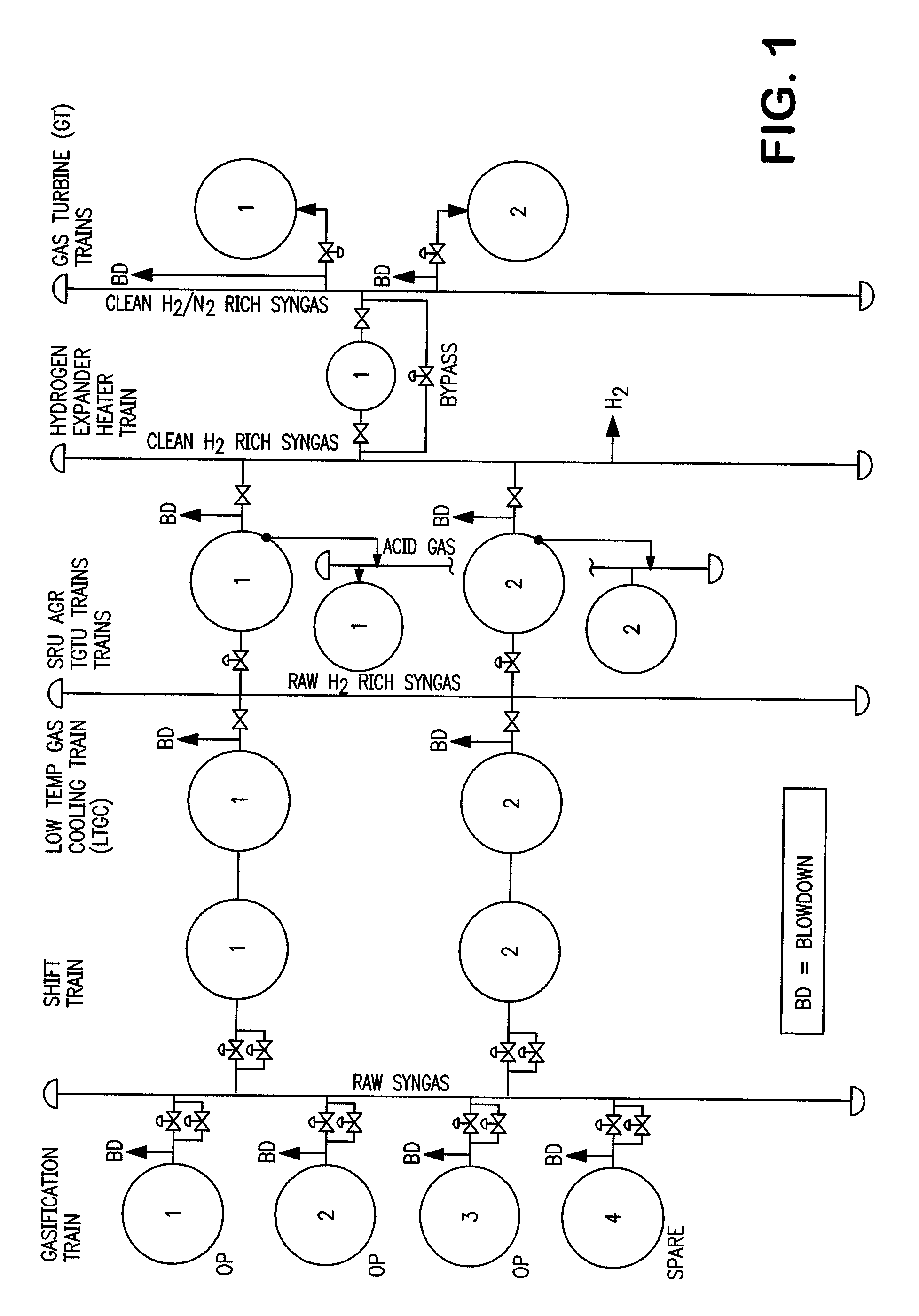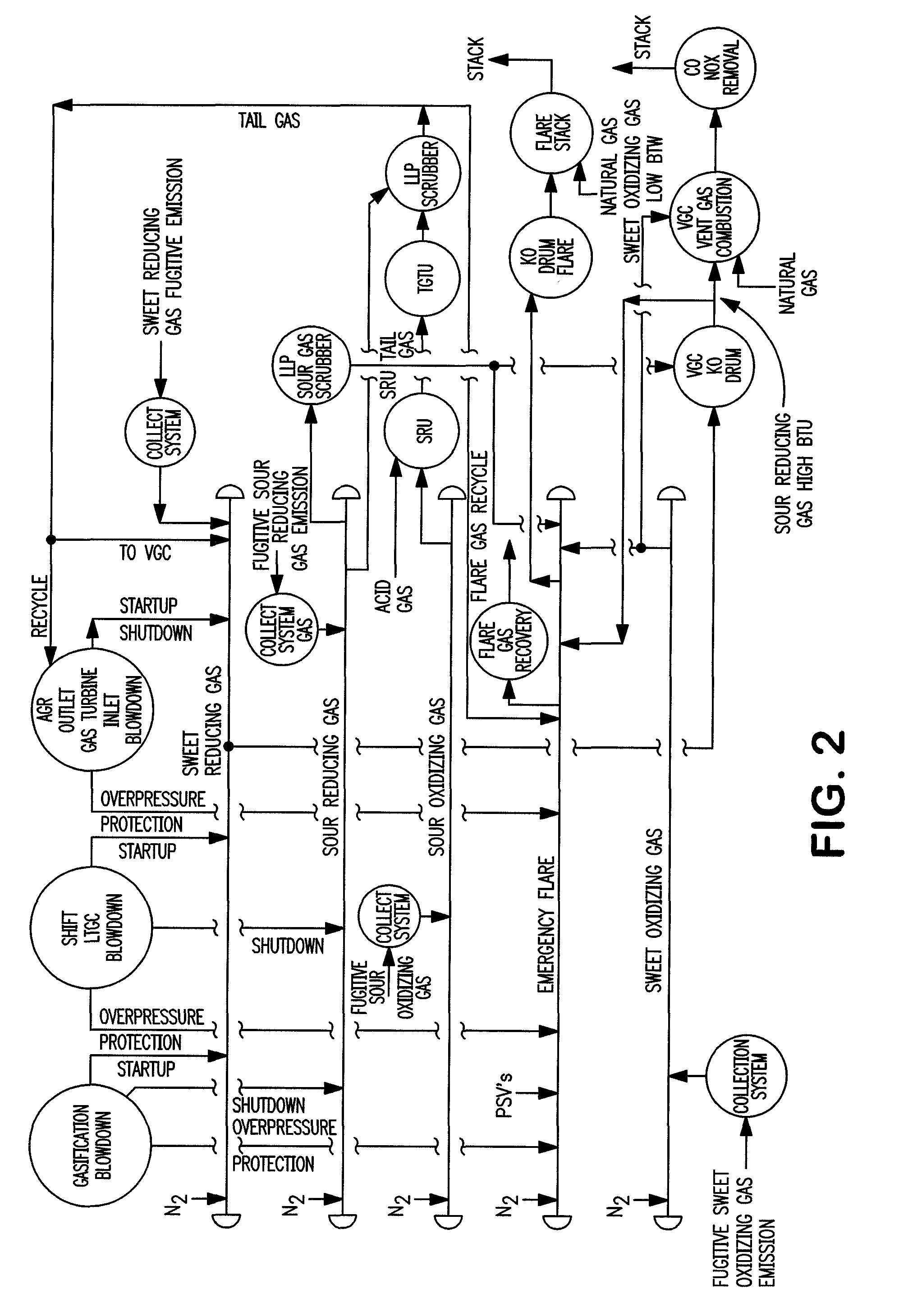Emission free integrated gasification combined cycle
a gasification combined cycle and gasification reactor technology, applied in the direction of combustible gas production, combustible gas purification/modification, hydrogen separation using liquid contact, etc., can solve the problems of less than about 2 vol % of nitrogen in the product, and higher than normal emissions of contaminants such as sulfur, so as to minimize nox, reduce nitrogen oxides, and maximize the destruction efficiency of volatile compounds
- Summary
- Abstract
- Description
- Claims
- Application Information
AI Technical Summary
Benefits of technology
Problems solved by technology
Method used
Image
Examples
Embodiment Construction
[0032]Broadly, in accordance with the present invention the syngas production zone or gasifier in an IGCC complex is started up with a clean, sulfur-free, containing less than about 10 ppmv sulfur hydrocarbon-containing feedstock such as natural gas or a light hydrocarbon liquid such as methanol. The sulfur-free syngas produced in the gasifier, a sweet reducing gas, is then sent to a vent gas combustor having a fuel nozzle for combustion via a blow down conduit downstream of the gasifier. When the downstream acid gas removal unit and the sulfur recovery unit and the tail gas treatment unit are commissioned, the clean fuel is switched to a high sulfur solid fuel. After the AGR is fully commissioned, the acid gas (H2S and other contaminants) are concentrated and sent to a sulfur recovery unit e.g. Claus unit to make elemental sulfur. If the acid gas concentration is less than 25% vol H2S in the acid gas during the start-up, such acid gas is routed to a sour gas scrubber. Once the SRU ...
PUM
| Property | Measurement | Unit |
|---|---|---|
| temperatures | aaaaa | aaaaa |
| temperatures | aaaaa | aaaaa |
| pressure | aaaaa | aaaaa |
Abstract
Description
Claims
Application Information
 Login to View More
Login to View More - R&D
- Intellectual Property
- Life Sciences
- Materials
- Tech Scout
- Unparalleled Data Quality
- Higher Quality Content
- 60% Fewer Hallucinations
Browse by: Latest US Patents, China's latest patents, Technical Efficacy Thesaurus, Application Domain, Technology Topic, Popular Technical Reports.
© 2025 PatSnap. All rights reserved.Legal|Privacy policy|Modern Slavery Act Transparency Statement|Sitemap|About US| Contact US: help@patsnap.com



